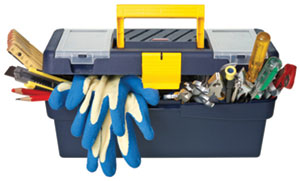GERALD A. KLINGBEIL
CHILDREN SELDOM WORRY. IF THERE IS A PROBLEM THEY JUST KNOW ?that Papa (or Mama) will know how to fix it.
Do you remember the time when you, as you were growing up, suddenly realized that your dad was not the strongest guy on this planet? Do you remember the moment when you understood that some things cannot be fixed?
Somehow this important realization of human limitation is ignored (or forgotten) by many of us when it comes to technology. The immensity of the oil spill in the Gulf of Mexico, following the explosion and sinking of the drilling rig Deepwater Horizon in April is still fresh in our minds. The effect of this pollution on the environment of a large strip of eastern states in the U.S.A. is still not fathomable, but every day I read about new schemes, suggesting that we can fix it—somehow—if we just throw at it sufficient resources and money.
 The “we can fix it” mentality is prevalent in all areas of life. A major financial crisis—we can fix it. A devastating earthquake or typhoon—we can fix it. Dysfunctional families and broken relationships—we can fix them. Slow or even negative church growth—we can fix it.
The “we can fix it” mentality is prevalent in all areas of life. A major financial crisis—we can fix it. A devastating earthquake or typhoon—we can fix it. Dysfunctional families and broken relationships—we can fix them. Slow or even negative church growth—we can fix it.
The do-it-yourself industry is forever inventing new gadgets, tools, and seminars that supposedly help us fix our homes, repair our cars, lose weight, etc., etc. We are trying hard. We applaud the self-made millionaire and ogle about stories of individuals who made it from rags to riches. But somehow it has not sunk in yet that we are all flawed individuals who need outside help.
With the arrival of modernism in the late nineteenth century, people developed a sense of control. As a matter of fact, most people living at the beginning of the twentieth century were excited about the future and the possibilities of technology that would make life easier, more comfortable, and ring in an age of tranquility, peace, and progress.
It was not to be. Two world wars later and after hundreds of bloody regional conflicts, with an increasing gap between the haves and the have-nots, people somehow still believe that they can fix it—themselves. In a sense, this is a logical development after God was relegated to the realms of myth and fairy tales.
Truth is: we cannot fix it on our own. Try as we might, we cannot pick up ourselves by our own boot straps. We need outside help. We need, even (and especially) in our Christian walk, One who can carry our iniquities and transform our inabilities into capability. Paul wrote about this in his letter to the Philippians. “I can do all things through Him who strengthens me” (Phil. 4:13, NASB).* The emphasis here is on “through Him” and not on “I can.” As a child of God, I realize that I cannot fix everything. I depend on the Master to transform me, to reshape me, to renew me, and to heal my brokenness. I need the Great Healer to restore my relationships.
We can see how this works individually, but how does this concept work in the church? It calls for more humility and less swaggering. Yes, this church has grown tremendously over the past decades, and yes, some of our approaches have been instrumental to this growth. But at the end of the day, it is God’s Spirit and His guidance that we need, not do-it-yourself attitudes and another seminar on strategic thinking. In a time of utmost national crisis following the exile in Babylon, the best antidote against the we-can-fix-it mind-set can be found in the words of the prophet Zechariah: “‘Not by might nor by power, but by My Spirit,’ says the Lord of hosts” (Zech. 4:6, NASB).
__________
*Scripture quotations marked NASB are from the New American Standard Bible, copyright © 1960, 1962, 1963, 1968, 1971, 1972, 1973, 1975, 1977, 1995 by The Lockman Foundation. Used by permission.
________________
Gerald A. Klingbeil is an associate editor of the Adventist Review. This article was published August 19, 2010.

 The “we can fix it” mentality is prevalent in all areas of life. A major financial crisis—we can fix it. A devastating earthquake or typhoon—we can fix it. Dysfunctional families and broken relationships—we can fix them. Slow or even negative church growth—we can fix it.
The “we can fix it” mentality is prevalent in all areas of life. A major financial crisis—we can fix it. A devastating earthquake or typhoon—we can fix it. Dysfunctional families and broken relationships—we can fix them. Slow or even negative church growth—we can fix it.